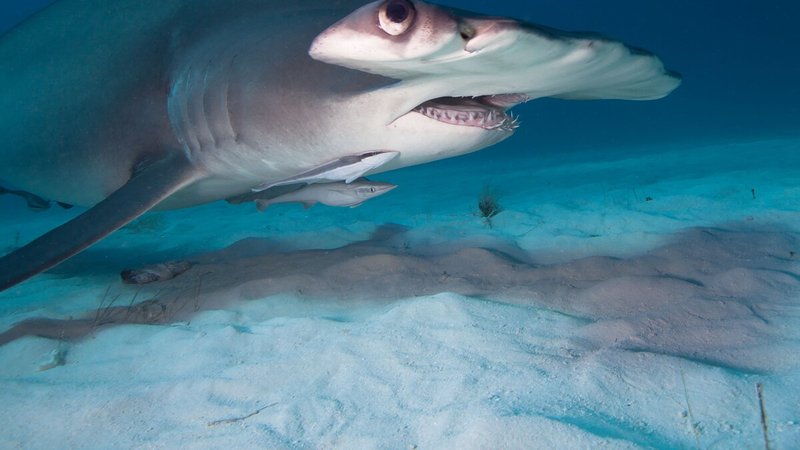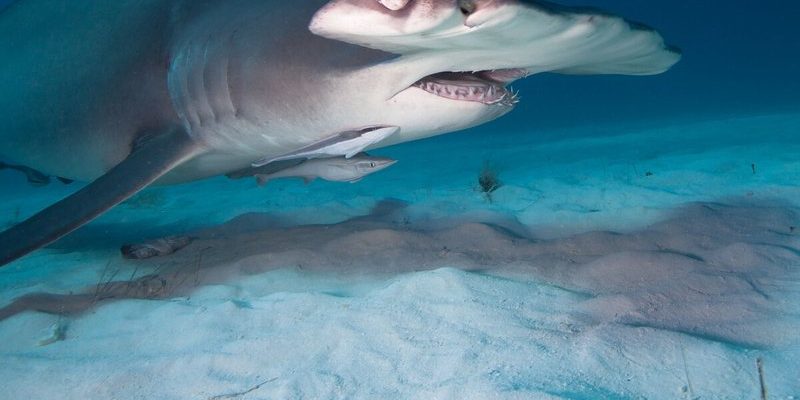
Picture this: you’re at the beach, the sun is shining, and you catch a glimpse of a hammerhead gliding gracefully through the water. It’s a stunning sight, but sadly, these majestic predators face numerous threats that endanger their survival. In this article, we’ll explore the current status of hammerhead sharks, the factors contributing to their decline, and what’s being done to protect them.
Understanding Hammerhead Sharks
Hammerhead sharks belong to the family Sphyrnidae and are identified by their unique head structure, known as a cephalofoil. This distinct shape isn’t just for looks; it serves practical purposes, like enhancing their electrosensory capabilities. This means they can detect electrical fields created by prey hiding in the sand, making them skilled hunters. There are several species of hammerheads, including the great hammerhead, scalloped hammerhead, and smooth hammerhead, each with their own unique characteristics.
The great hammerhead is the largest, reaching lengths of up to 20 feet! Can you imagine seeing that in the wild? While they might look intimidating, hammerheads are generally not a threat to humans. However, their populations are starting to dwindle, and that’s what we need to be concerned about.
The Endangered Status of Hammerhead Sharks
So, are hammerhead sharks endangered? Well, according to the International Union for Conservation of Nature (IUCN), several species of hammerheads are listed as endangered or vulnerable. For instance, the great hammerhead is classified as endangered, facing serious threats from overfishing and habitat loss. This is not just a trivial problem; it’s a significant issue that affects entire ocean ecosystems.
You might be wondering why their status matters. Hammerhead sharks play a crucial role in maintaining the balance of marine ecosystems. As apex predators, they help control the populations of other marine species, ensuring that the ocean remains healthy and diverse. When hammerheads decline, it can create a ripple effect, impacting other species and the overall health of the ocean.
Threats to Hammerhead Sharks
Understanding the threats that hammerhead sharks face is essential to their conservation. Here are some of the main challenges contributing to their decline:
- Overfishing: This is one of the biggest threats. Hammerheads are often caught for their fins, which are highly valued in the shark fin trade. This practice, known as finning, is not only cruel but also unsustainable, leading to drastic population reductions.
- Bycatch: Hammerheads often get caught unintentionally in fishing gear meant for other species. This incidental catch, known as bycatch, can severely impact their numbers, especially since many hammerheads are not able to survive being caught.
- Habitat Loss: Coastal development and pollution are destroying the shallow lagoon habitats that many hammerhead species rely on for breeding and feeding. This loss of habitat can make it even harder for their populations to recover.
Each of these factors contributes to a concerning trend: hammerhead shark populations are declining, which threatens not only their survival but also the health of the oceans they inhabit.
Conservation Efforts for Hammerhead Sharks
You might be asking yourself, “Is anything being done to help these sharks?” The great news is that various organizations, governments, and communities are stepping up to protect hammerheads. Here are some key conservation efforts:
- Legal Protections: Many countries have enacted laws to protect hammerheads from overfishing and illegal trade. For example, the Shark Conservation Act in the United States prohibits shark finning and helps regulate shark populations.
- Marine Protected Areas: Establishing marine protected areas (MPAs) can help safeguard critical habitats for hammerheads, allowing them to thrive without the pressures of fishing and destruction.
- Awareness Campaigns: Organizations like Ocean Conservancy and Wildlife Conservation Society are working tirelessly to raise awareness about the importance of hammerhead sharks and the threats they face. Educating the public can lead to more support for conservation measures.
Through these efforts, there’s hope for a brighter future for hammerhead sharks. Each step in conservation can make a difference, but it requires cooperation from everyone—from policymakers to everyday beach-goers.
How You Can Help Hammerhead Sharks
Even if you’re not a marine biologist, there are plenty of ways you can contribute to the conservation of hammerhead sharks. Here’s how:
- Support Sustainable Seafood: Make informed choices about the seafood you consume. Look for certifications that indicate sustainable fishing practices to help reduce overfishing.
- Get Involved: Join or support local ocean conservation groups. Participate in beach clean-ups or advocacy campaigns aimed at protecting marine life.
- Spread the Word: Share what you learn about hammerhead sharks with friends and family. Awareness can lead to action, and every voice counts in the fight for conservation.
It may seem like a small effort, but together we can create a wave of support for hammerhead conservation. Just as sharks play a vital role in ocean health, so too can we in ensuring their survival.
The Future for Hammerhead Sharks
Looking ahead, the future of hammerhead sharks depends on the actions we take today. With ongoing efforts in research, awareness, and legal protections, there is hope for their recovery. It’s essential for all of us to stay informed and advocate for the policies that protect these incredible creatures.
Honestly, the fate of hammerhead sharks isn’t just their problem; it’s ours too. Healthy oceans help maintain balanced ecosystems, which ultimately benefit us. The more we understand and care about hammerhead sharks, the better we can protect them.
In closing, hammerhead sharks are more than just fascinating creatures of the sea—they’re crucial players in maintaining marine ecosystems. With their populations declining due to overfishing, habitat loss, and bycatch, it’s clear that coordinated conservation efforts are needed. By supporting sustainable practices, staying informed, and advocating for stronger protections, we can help ensure that future generations get to see these magnificent creatures thrive.
So next time you think of hammerhead sharks, remember they’re more than just a cool sight in the ocean; they need our help. Let’s work together to make sure they’re around for years to come.

